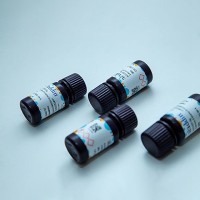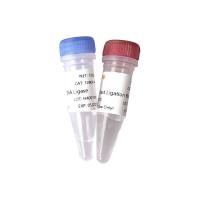Application of Ligation-Mediated Reverse Transcription Polymerase Chain Reaction to the Identification of In Vivo Endonuclease-Generated Messenger RNA
互联网
344
Most approaches to studying messenger RNA (mRNA) decay in vivo lack sufficient sensitivity to identify decay intermediates.
The identification of such intermediates using in vitro decay systems can provide suggestive evidence for endonuclease-mediated
degradation in vivo; to validate conclusions drawn from in vitro experiments one must demonstrate cleavage of the mRNA in
vivo. Primer extension or S1 nuclease protection assays work best on relatively abundant mRNAs and even then require long
exposure times. We describe a facile approach using ligation-mediated polymerase chain reaction to identify in vivo mRNA decay
intermediates. In this procedure, total cellular RNA is ligated to a primer bearing a 5′ phosphate and 3′ amino group. Reverse
transcription is primed using a complementary primer, and mRNA-specific decay intermediates are identified by polymerase chain
reaction amplification using a 5′-[32
P]-labeled gene-specific primer. Products generated in this manner are gel purified, reamplified, and the 3′ end of each decay
intermediate is identified by the sequence junction of the specific mRNA and the initial ligation primer. We show an example
of the time-course of appearance of several specific decay intermediates of c
-myc
mRNA in differentiating murine erythroleukemia cells.









